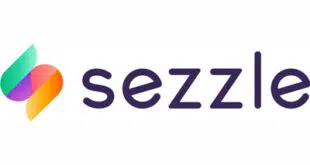Closed-loop prepaid cards held their own in 2010, growing by 13% in loads to $261.2 billion from $230.3 billion in 2009, according to Mercator Advisory Group Inc.’s newly released industry study.
In fact, the closed-loop market, which while bigger in loads but slower growing than the newer, general-purpose or network-branded prepaid card sector in recent years, grew faster than Mercator expected in 2010, according to senior analyst Ben Jackson. The reasons include a strong performance by gift cards and more loads on prepaid card accounts for online gaming and digital content. Mobile-phone calling-minutes cards and certain government programs that distribute more benefits in weak economic times also saw increases. “On the whole, what we’re seeing is even the closed-loop market is showing some resilience in the face of the economy,” Jackson says.
The mainstay of the closed-loop prepaid card market, the gift card good only at the issuer-merchant’s locations, saw some programs decline while others grew last year, according to Jackson. Overall, the growth more than offset the declines. Maynard, Mass.-based Mercator had forecast 4% growth for in-store gift cards, but total load volume hit $84.6 billion, up 10% from $76.9 billion in 2009.
Consumers are simply recognizing the intrinsic value of gift cards and many retailers are doing a better job of integrating their gift cards with loyalty programs and other promotions, Jackson says. “They’re realizing that gift cards are not just a plastic version of paper gift certificates,” he says.
What Mercator calls its digital-content category grew 29% to $12 billion in loads last year versus $9.3 billion in 2009. The category includes two segments, one measuring digital media, up 19%, and games and ringtones, up 45%. Giant social network Facebook added its heft to digital-content sales last year when it launched its Facebook Credits card, a product that enables users to buy content from sites that sell on Facebook. Online games, many offered through social networks, also boosted digital-content sales on closed-loop accounts. Zynga, creator of such popular games as Farmville and Mafia Wars, began selling prepaid cards in March 2010, Mercator notes.
Meanwhile, loads on prepaid mobile-phone plans grew 16% in 2010 vs. 13% in 2009 thanks to the increasing popularity of cell phones in general and more smart phones being enabled for prepaid payment plans. More mobile-phone users also are looking for alternatives to costly long-term contracts. “As people struggle with money and the economy, they’ve got to manage their cell-phone contracts,” Jackson says. “I think it’s an obvious case for prepaid.” Loads on prepaid cards for landline long-distance calls fell 7% in 2010.
The struggles many consumers are having with finding or keeping a job helped to boost loads on closed-loop cards for nutrition-assistance programs such as the Supplemental Nutrition Assistance Program (SNAP), formerly called Food Stamps, and the Women, Infants and Children (WIC) program by a combined 21%. Loads in the Temporary Assistance for Needy Families (TANF), the federal government’s main welfare program, however, grew by only 2% as more benefits shift to open-loop cards.
Loads on employee and partner incentive closed-loop cards increased 10% and loads on consumer-incentive cards also grew 10%.
Mercator gathered its data for its eighth annual prepaid card study from a variety of sources, including processors and merchants. Some previous figures have been revised to reflect additional data.





